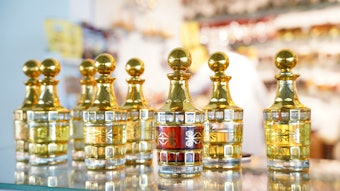The bath and body care category managed to wave off potentially negative pressures and record its best results in more than a decade, with a retail value climbing 7% (at fixed U.S. dollar prices) to reach $76 billion. What is more, there seems little sign of any significant slowdown; this year, according to the latest data from Euromonitor International, growth is on course to top 7%. All the category’s major markets are showing an upward trajectory, new product development is at a high, and investment is ramping up across emerging and developed regions alike.
A penny-pinching shopping culture is the key to bath and body care’s strong recent performance. The deodorant spray category, notably, has seen a huge uptick in demand as growing numbers of consumers trade down from much pricier fragrances. It is now a $10 billion a year category in its own right, with sales soaring by 11% last year. Over a five year period, global sales were up 56%, with spending in Brazil (the biggest market) more than quadrupling.
There is evidence, too, that general-purpose body care and bath/shower products have reaped the benefits from dipping consumer confidence in key markets. This is due to the middle class spending more time at home and cutting back on trips to hair salons and spas. Bath and body care manufacturers are also cottoning onto at-home pampering as an attractive platform for product development. There is a new sensory focus in bath and body creams, for example, and increasing demand for new experiences with bath and body products. This is driving innovation in textures, e.g., new oil and gel formats, especially, as well as longer-lasting scents, new moisturizing application formats, and cooling and smoothing effects. These efforts are about turning at-home bath and body care into a more indulgent, spa-like experience. The margins are also healthy in these categories because the consumer agenda is less about discounting and more about a burgeoning demand for innovative products.
New Frontiers
Emerging markets continue to be key targets for new investments in bath and body brands in all categories. India, notably, is a fast-growing market, and is on course to leapfrog Brazil in 2015 as the largest in the world for bar soap. In India, discounted multipacks are fuelling a big increase in demand, and manufacturers are also pushing into formerly inaccessible rural areas, where there is huge untapped potential.
Overall, emerging and developing markets will account for 54% of bath and body value sales in 2014, compared with 44% five years ago and 35% five years before that. Brazil and India have been at the frontline of this power shift, collectively fuelling 42% of the emerging markets’ incremental growth over the last decade. China, Argentina, Russia, Iran and Mexico have also been key growth engines. New fast-growing markets to look out for in the next five years include Indonesia and Saudi Arabia.
To sustain strong annual growth globally, though, the category will need to keep innovating. Yes, trade-down activity, household cocooning and investment in emerging markets have collectively been a major spur to the recent high growth rates, but the challenge will be in holding onto consumers as economic conditions improve in key markets, and as competition intensifies from other product categories. What bodes well is that bath and body is still only scratching the surface in terms of its segmentation potential.
Editor’s note: To read this full market report, see the November 2014 issue of GCI magazine or visit www.GCImagazine.com.










